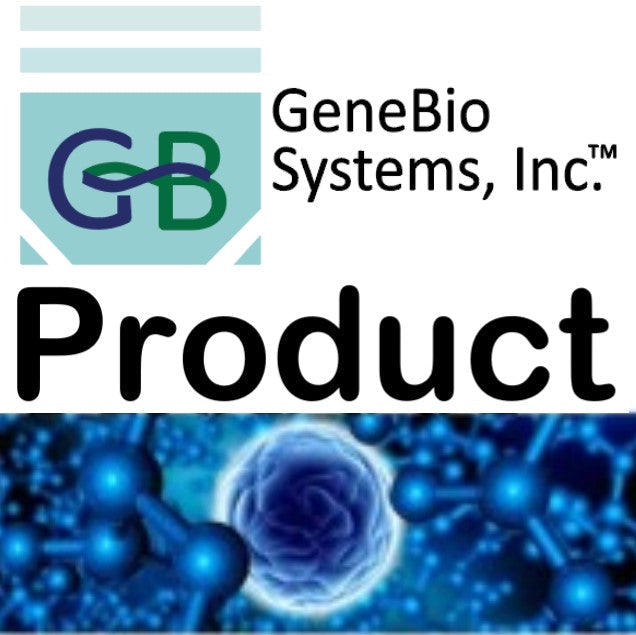Gene Bio Systems
Recombinant Human Centromere protein R(ITGB3BP)
Recombinant Human Centromere protein R(ITGB3BP)
SKU:CSB-EP622653HU
Couldn't load pickup availability
Size: 200ug. Other sizes are also available. Please Inquire.
In Stock: No
Lead time: 10-20 working days
Research Topic: Epigenetics and Nuclear Signaling
Uniprot ID: Q13352
Gene Names: ITGB3BP
Organism: Homo sapiens (Human)
AA Sequence: MPVKRSLKLDGLLEENSFDPSKITRKKSVITYSPTTGTCQMSLFASPTSSEEQKHRNGLSNEKRKKLNHPSLTESKESTTKDNDEFMMLLSKVEKLSEEIMEIMQNLSSIQALEGSRELENLIGISCASHFLKREMQKTKELMTKVNKQKLFEKSTGLPHKASRHLDSYEFLKAILN
Expression Region: 1-177aa
Sequence Info: Full Length
Source: E.coli
Tag Info: N-terminal GST-tagged
MW: 47.2 kDa
Alternative Name(s): Beta-3-endonexin Integrin beta-3-binding protein Nuclear receptor-interacting factor 3
Relevance: Transcription coregulator that can have both coactivator and corepressor functions. Isoform 1, but not other isoforms, is involved in the coactivation of nuclear receptors for retinoid X (RXRs) and thyroid hormone (TRs) in a ligand-dependent fashion. In contrast, it does not coactivate nuclear receptors for retinoic acid, vitamin D, progesterone receptor, nor glucocorticoid. Acts as a coactivator for estrogen receptor alpha. Acts as a transcriptional corepressor via its interaction with the NFKB1 NF-kappa-B subunit, possibly by interfering with the transactivation domain of NFKB1. Induces apoptosis in breast cancer cells, but not in other cancer cells, via a caspase-2 mediated pathway that involves mitochondrial membrane permeabilization but does not require other caspases. May also act as an inhibitor of cyclin A-associated kinase. Also acts a component of the CENPA-CAD (nucleosome distal) complex, a complex recruited to centromeres which is involved in assembly of kinetochore proteins, mitotic progression and chromosome segregation. May be involved in incorporation of newly synthesized CENPA into centromeres via its interaction with the CENPA-NAC complex.
Reference: "Beta 3-endonexin, a novel polypeptide that interacts specifically with the cytoplasmic tail of the integrin beta 3 subunit." Shattil S.J., O'Toole T.E., Eigenthaler M.J., Thon V., Williams M.J., Babior B.M., Ginsberg M.H. J. Cell Biol. 131:807-816(1995)
Purity: Greater than 90% as determined by SDS-PAGE.
Storage Buffer: Tris-based buffer,50% glycerol
Storage: The shelf life is related to many factors, storage state, buffer ingredients, storage temperature and the stability of the protein itself. Generally, the shelf life of liquid form is 6 months at -20℃/-80℃. The shelf life of lyophilized form is 12 months at -20℃/-80℃.
Notes: Repeated freezing and thawing is not recommended. Store working aliquots at 4℃ for up to one week.


